Part 1: A Story About Our Uncle
Part 1: A Story About Our UncleThe moment we start the game, we are presented with a choice: do we even want to play it?
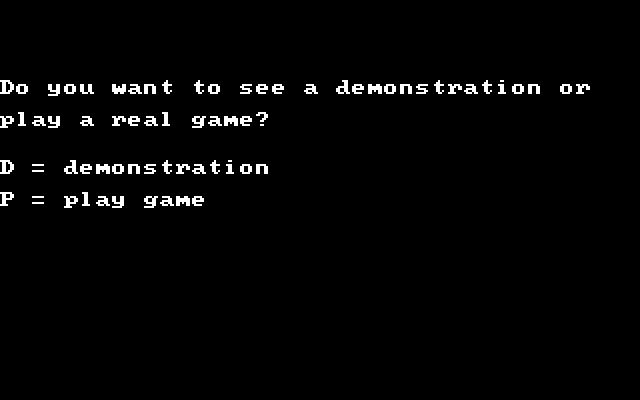
Memory constraints are pretty tight. This game is constantly doing the equivalent of loading and unloading DLLs to keep only what it really needs in memory at any given time. Because of that, you have to ask for the attract screen because running it will crowd out everything else.
Sure, we'll take a look at it. Once again, the first thing it tells us is how to make it stop:
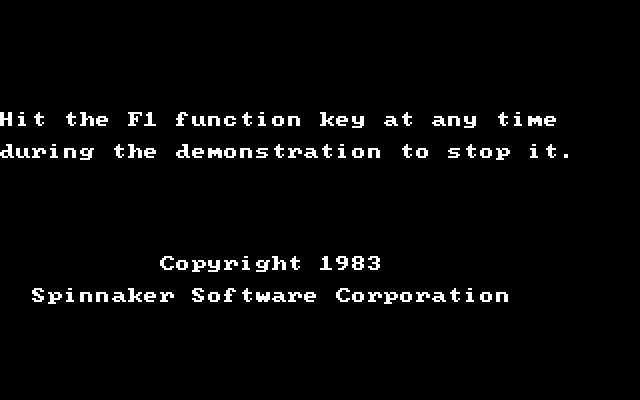
Weirdly enough, everywhere in the game itself, F1 is the "save game" button, not "quit". Anyway, we now get a brief but extremely dense wall of text explaining the basic setup and the various tasks before us:
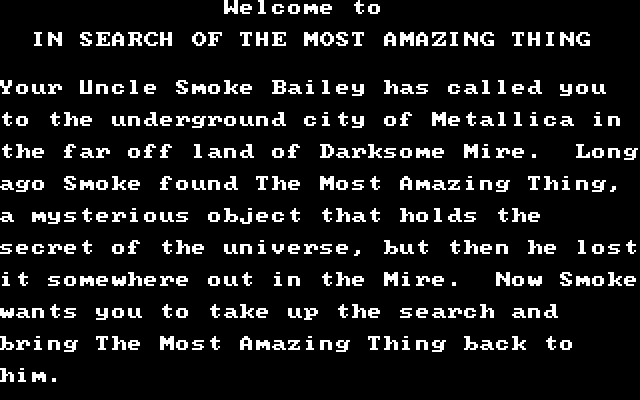
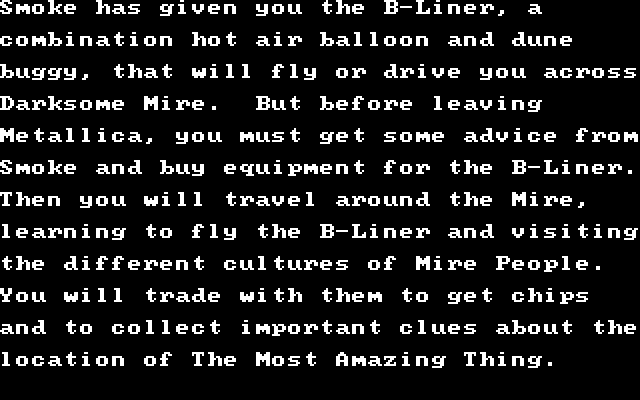
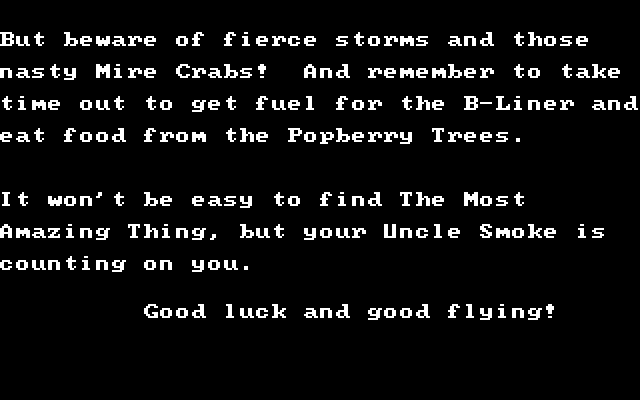
One of the reasons it's being so dense here is because if we're planning on playing the game, we're supposed to know it all already. The game shipped with a 100-page novella named The Adventures of Smoke Bailey, chronicling the adventures of our uncle as a young man.
In brief: he grew up in an extremely boring mid-20th-century-tech agricultural area of the planet Porquatz, and then a fortune teller at a carnival told him he had a great destiny on the other side of the world, so he stole the carnival's balloon ride (the A-Liner) and flew it there, to the vast tarry hellhole known as the Darksome Mire. There he had many adventures, befriended some of the Mire Folk, claimed The Most Amazing Thing for his own, and then was forced to abandon it somewhere in Darksome Mire. He then found the major technological civilization in the region and spent most of his life as a trader and bard amongst them and the Mire Folk, eventually earning enough to upgrade his stolen carnival balloon into a mighty hypertech airship, the B-Liner.
At this point, he was very old. His younger brother, though, had a child—us—bored out of our mind back in the same region of Porquatz. So he sent the B-Liner to pick us up so that we might finish the quest he was forced to abandon.
So we can be expected to recognize the various things mentioned in passing here because they were in the manual, and also in the story about our uncle. In case that isn't enough, though, the demonstration then gives a reasonably detailed walkthrough for the first third or so of the game. I'll be skipping that because we'll be doing that ourselves in these updates. It concludes with a message to parents and teachers about what an educational game this is. I'll be holding off on sharing that until we see the game in action and can judge for ourselves.
It then loops back to the "Press F1 to quit" screen. Fine. We press F1 and are brought back to the first screen. This time we say we want to play a real game.
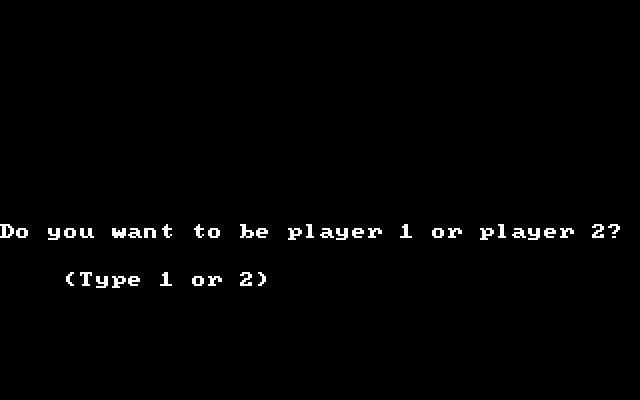
This spectacularly poorly worded question is actually asking us which of two save slots we want to use.
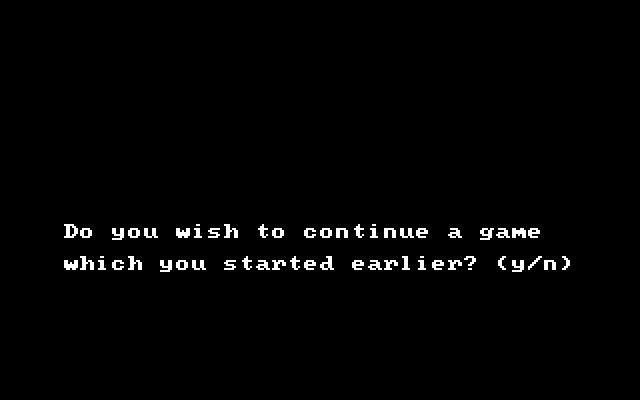
And having selected it, it then asks if we want to delete it. It's 1983. The concept of UX won't be invented for like 15 years, and it kind of shows.
We're starting a new game here, so we do want to delete it, and thus we hit N.
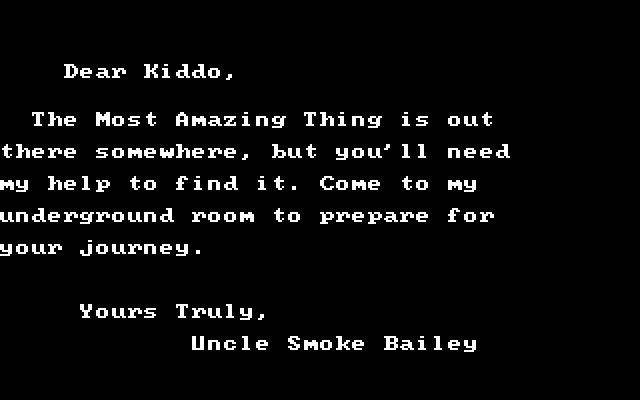
Gender neutral pronouns from an earlier age. We then get a really impressively smooth animated sequence of us flying our jetpack past the credits over to the B-Liner and the entrance to the primary technological civilization on Porquatz:

The great underground city of Metallica.
 This one is full of robots, though.
This one is full of robots, though. 
The band we think of here in 2019 when we see that name had only been founded two years ago at the time this game was published. I am just barely willing to play along with the idea that the authors did not know exactly what they were doing here.
We are then given our list of money: 5 red chips, 5 yellow chips, and 30 green chips. The Metallicans use green chips for money. Red and yellow chips are useless to us at the moment.
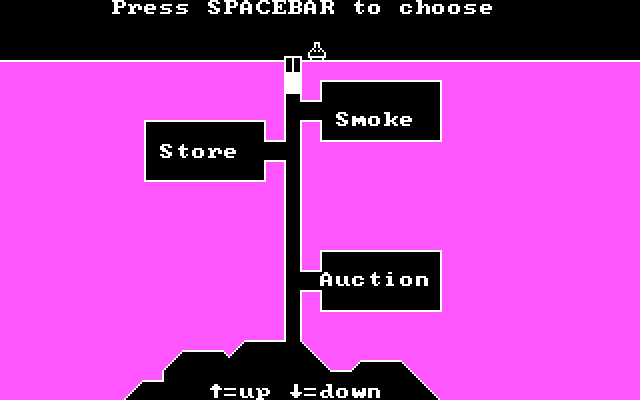
This is the part of Metallica we actually have access to. (The city proper is the yawning void beneath us, and the elevator does not let us go down that far.) We've been given a clear goal already, though, and the manual has reinforced it:
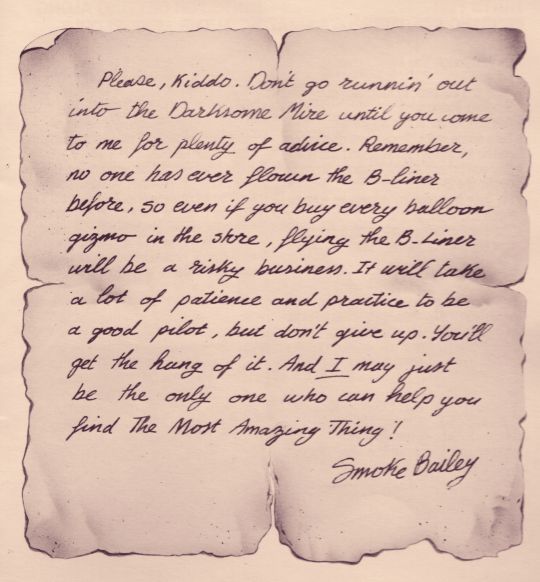
I link this version of the letter because in noting that nobody's ever flown the B-Liner before and that it is intrinsically super-risky to do so, he seems to have forgotten how we got here in the first place. He put us, an eleven-year-old child, alone, in this thing and trusted its autopilot to land at exactly the right point in a tar pit the size of an entire continent.
Uncle Smoke is perhaps a bit reckless and maybe does not have our best interests at heart, is all I'm saying, here.
But sure, let's stop off at his apartment and let him know that we didn't drown in tar.
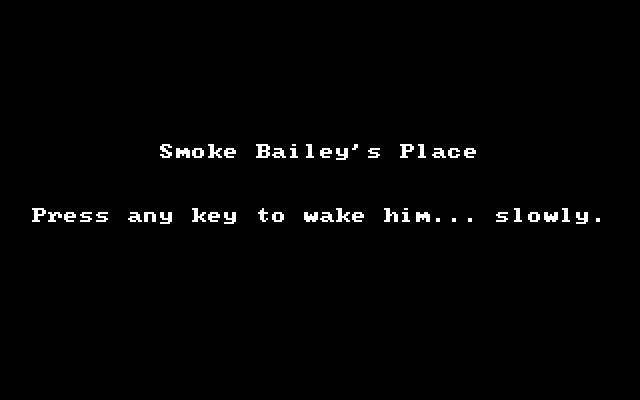
Sure thing, loading screen.
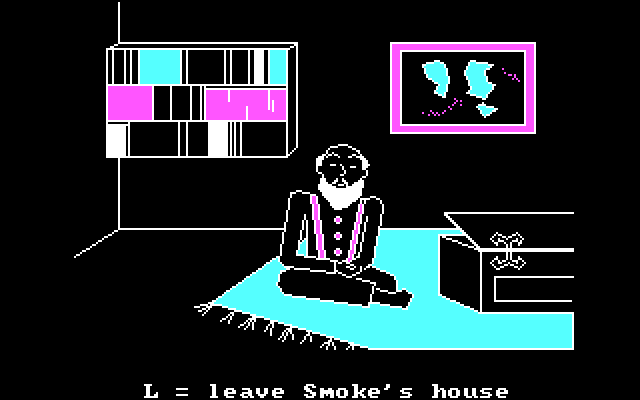
Uncle Smoke is napping here, in the glorious cyan-magenta-white of default CGA graphics. In all honesty, though, one of the reasons I'm playing the DOS version here is that it really makes extremely deft use of the CGA card's preposterously limited palette.
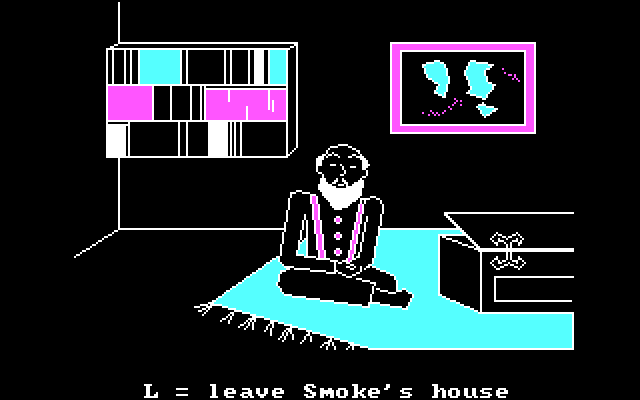
In theory, if you pester him too rapidly, he'll get mad and throw you out, but the timing code for that was tuned to a 4.77MHz PC XT and I've never been able to trigger it.
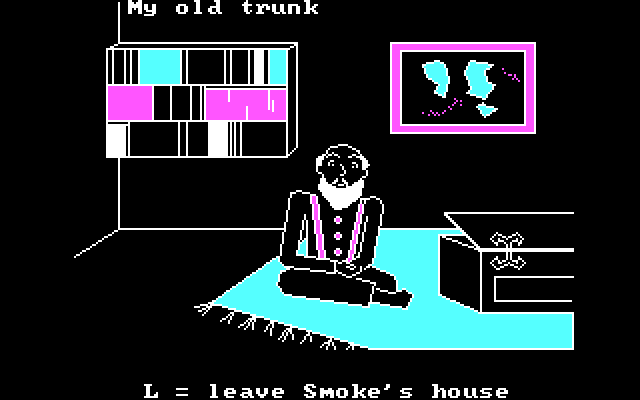
He wakes up, sees us, and then manages one sentence before falling back asleep again. What the heck, Uncle Smoke.

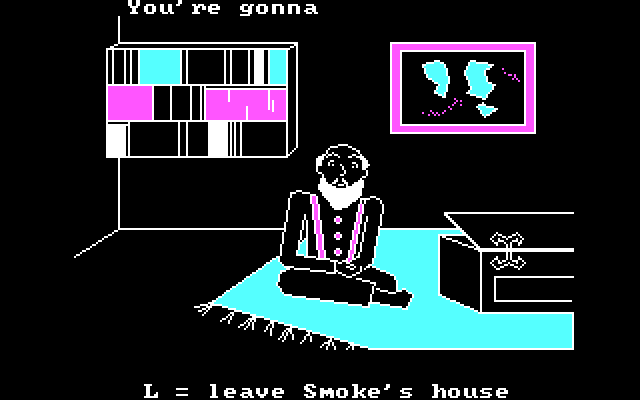
That's more like it. He also has nothing to say to us after he's given us something, so off we go.
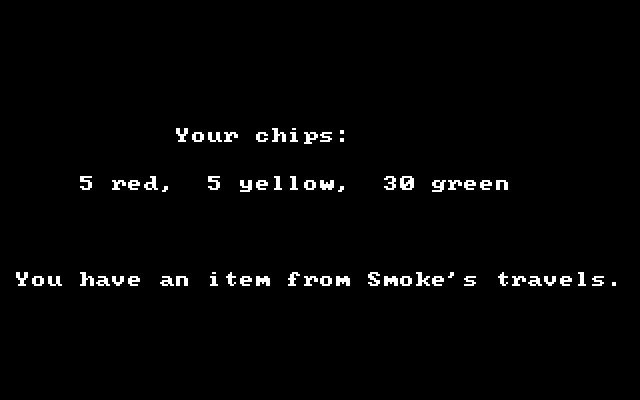
Sounds good. Next stop: the Galactic Auction House.